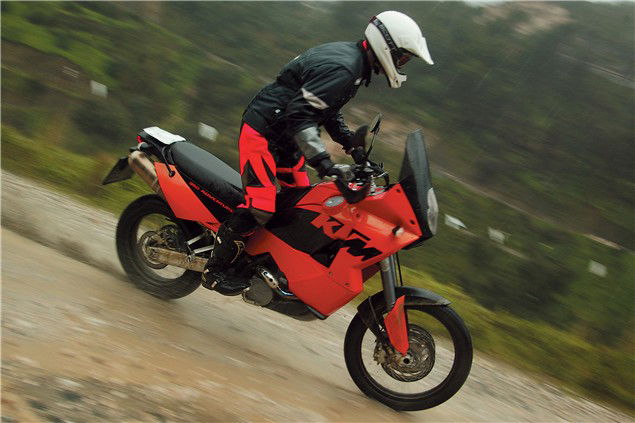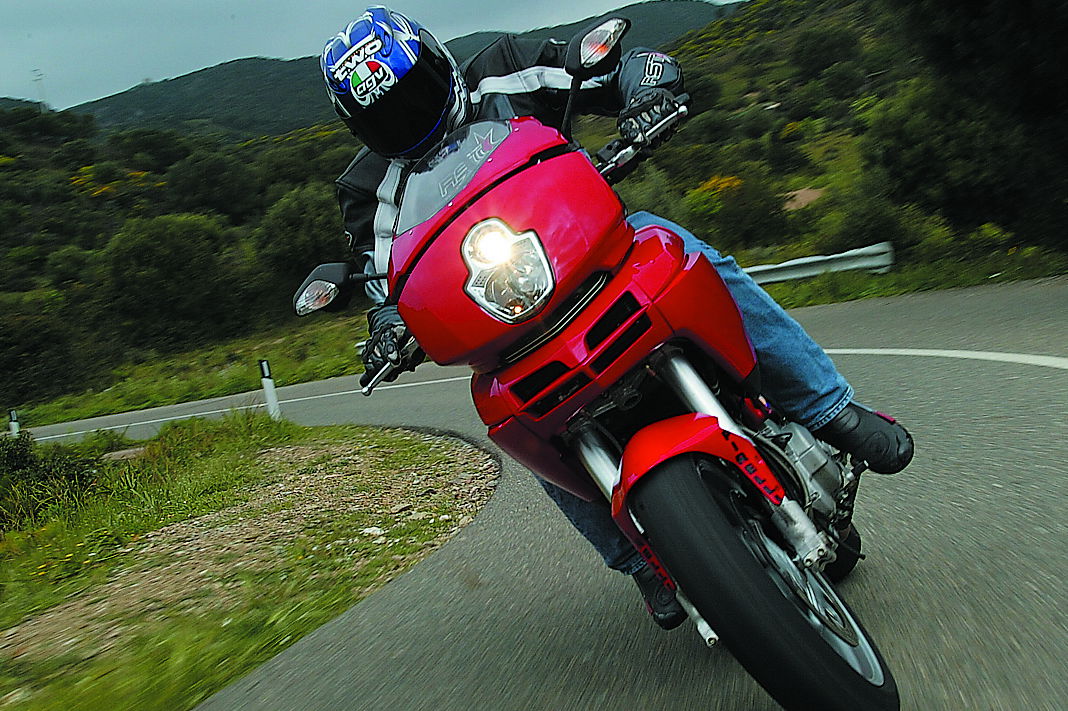First Ride: KTM 950 Adventure
Light, punchy, fast and capable of genuine off-road excursions, the big new KTM rocks. But there are slight question marks over comfort and vibration


Click to read: KTM 950 Adventure owners reviews, KTM 950 Adventure specs and to see the KTM 950 Adventure image gallery.
It was the last, muddy blast that showed what the 950 Adventure was made of. We'd left our Marbella launch base at 8.30 this morning in a downpour, and what should have been a great day's riding both on- and off-road had been marred by almost continual rain more reminiscent of Scunthorpe than southern Spain. The steep off-road course had been abandoned before I reached it, and by 4.30pm almost everyone had headed back.
But there was still time to aim the orange Adventure S down a nearby dirt road. Minutes later I was splashing the KTM down a muddy gravel track, gassing it every so often to get the rear Pirelli spinning, while trying to ignore the steep drop waiting on the other side of the fence if I got it wrong. It was no surprise that the Adventure felt good in the nasty stuff. After all, KTM's first roadgoing V-twin is based on the 950 Rally on which Italian ace Fabrizio Meoni wonthe 2002 Dakar Rally - to the extent that KTM claims 95 per cent of parts are identical. The Austrian firm's policy of developing its road bikes from competition machines has brought a new level of off-road ability to the big trailie market.
KTM sets its sights high these days. The first sentence of the Adventure press introduction booklet says: "The goal of the KTM Group is to become the largest motorcycle manufacturer in Europe." This will be done, they say, by being world leaders in the racing-oriented sector of the off-road market, and by expanding its range to sports street bikes - hence the V-twin. Such bold statements seem rash coming from many firms, but slightly less so from this one. In the year to last September, KTM sold 61,000 bikes, an increase of 35 per cent, and is on target to raise that figure to 77,000 this year. Only about 3000 will be Adventures but that figure will double the following year, when the V-twin range will expand with the 115bhp Duke roadster, unveiled at last year's Munich Show and due early in 2004.
First up it's the Adventure, or rather Adventures. Alongside the silver standard model is the Adventure S, intended for more serious off-road use. The S comes in KTM's traditional orange, has 35mm more suspension travel at both ends, is otherwise identical, and costs £7700 compared to the standard bike's £7350.
Most people will buy the standard bike, whose seat height is a tall 880mm rather than a stratospheric 915mm. The seat is quite narrow though, so being lanky I could put both feet down even on the S. Short riders will struggle, but at least the Adventurer is relatively light, at 198kg. The standard model felt pretty manoeuvrable once I'd climbed aboard, fired up the 942cc V-twin engine, and splashed out into the Malaga traffic.
Immediately it was obvious that the Adventurer was sportier than other big trailies. As well as being 20kg or more lighter, it carries its weight well, due to its compact engine and low centre of gravity. The bike felt almost like a smoother version of a big single - and a much more powerful one, too. The motor was a real star at low revs, feeling very smooth and delivering an instant burst of acceleration that had the rear Pirelli scrabbling for grip.
KTM's efforts to combine a light crankshaft, softly tuned engine and carbs rather than fuel-injection have given excellent throttle response. With a max of 98bhp there's plenty of top-end go, too. When the road opened up, a brief flat-out blast sent the orange-faced tacho's needle ripping towards the 9500rpm redline through the gears, as the digital speedo topped out at about 125mph. At high revs there was a bit more vibration than I'd expected from the balancer-shaft equipped motor - enough vibes to encourage short-shifting. The KTM sat at 5000rpm and about 85mph in top feeling smooth and relaxed. Above that speed the footrests and the rear of the tank transmitted a slight buzz that might have been annoying after a while.

